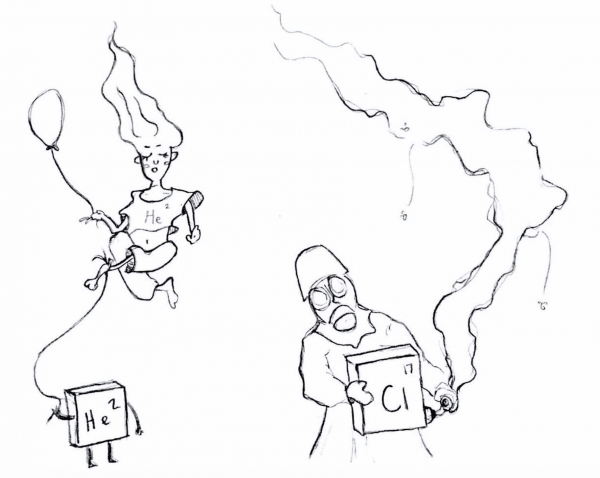Everything is made of something. Books are made of pages, which are made of paper, which is made of wood. All of these items are made up of molecular complexes that break down into tiny atoms. What differentiates these atoms from one another is the number of subatomic particles, protons and neutrons, that compose them. This is what makes elements distinct from one another.
For a long time, people didn’t know what anything was made of. This ignorance persisted until the protoscience of alchemy birthed chemistry almost four hundred years ago. Early chemists initially found elements haphazardly, labelling and mislabelling them as they went, until the invention of the periodic table of elements.
“Truth be told, chemical knowledge at the time was pretty chaotic,” Joe Schwarcz, director of the McGill Office for Science and Society, wrote in an email to The McGill Tribune. “Students basically memorized what happened when chemicals were combined. They learned, for example, that when a piece of sodium was dropped into water, it ignited [while] a piece of aluminum did not. Nobody really knew why.
The organization of elements continued to be mired in confusion until Dmitri Mendeleev, a Siberian-born chemistry professor at the Main Pedagogical Institute in St. Petersburg, Russia, began recording the atomic weights, names, and properties of known elements on cards. By 1868, he had created the first prototype of the periodic table, placing the elements in horizontal rows in order of atomic weight and grouping elements of similar properties into columns.
“Then came Mendeleev’s boldest stroke,” Schwarcz wrote. “He predicted from ‘holes’ in his periodic table that undiscovered elements must exist.”
Every element has a different, exciting tale of discovery. Initially, elements were found by exploring nature, delving into caves or the ocean to find substances no human had yet laid eyes upon and then manually analyzing their properties back at the lab. Today, scientists have found all the natural elements and so have moved on to investigating elements that can only be created artificially.
Scott Bohle, a chemistry professor at McGill and the Canadian Research Chair in Bioinorganic Chemistry, elaborated on the process of modern elemental discovery.
“We’ve discovered all the stable [elements], or we think we’ve discovered [them],” Bohle said. “But, now it’s much more controversial […] because you have to demonstrate that you have […] a new element.”
Bohle explained that nature fabricates many elements in nuclear explosions via calcium fusion, a process in which a calcium atom collides with a larger atom to create a new, larger molecule, usually verified via mass spectrometry.
Unfortunately, the larger molecules get, the less stable their configurations are: Some of the largest on the periodic table exist for mere thousandths of a second before they begin to decay, giving off protons and neutrons and, therefore, changing their elemental composition.
To mark the enormous scientific impact of Mendeleev’s creation, UNESCO named 2019 the International Year of the Periodic Table to celebrate its 150th anniversary. Despite being over a century old, modern scientists still refer back to it.
“I used to be able to write out the basic table in about 75 seconds, but now I am out of practice,” David Harpp, professor in the Department of Chemistry, said. “It is easy to do with an hour’s effort and helpful for students, I believe, for defining the relationships. They ‘own’ the table instead of having to look it up.”
Singing the table appears to be another popular way to learn it, with a number of different tunes published online, including celebrity appearances from Sheldon Cooper and even Laura Pavelka, a faculty lecturer in McGill’s Department of Chemistry.
“Our inorganic chemistry course instructor insisted that we memorize the first row of the transition metals, which I am terrible at […], so I made a little tune to sing the list of 10 elements,” Pavelka wrote in an email to the Tribune. “Joke’s on me, because I still remember them in order!”
No matter the field, the periodic table of elements has revolutionized the way that scientists think about and organize the elements that make up our world.






